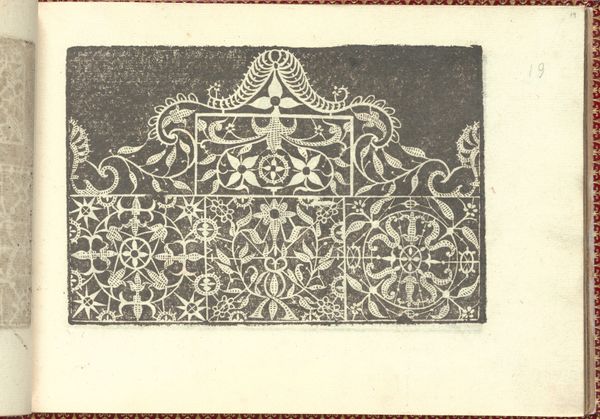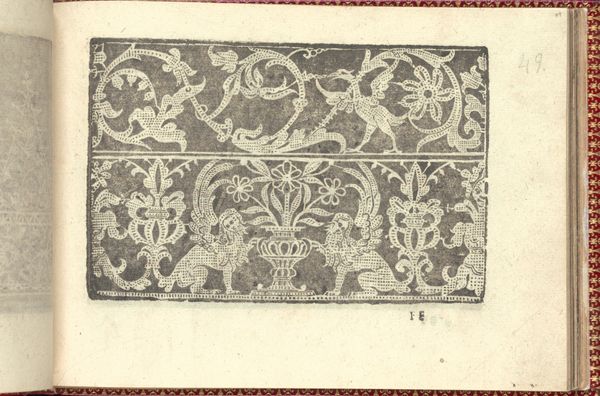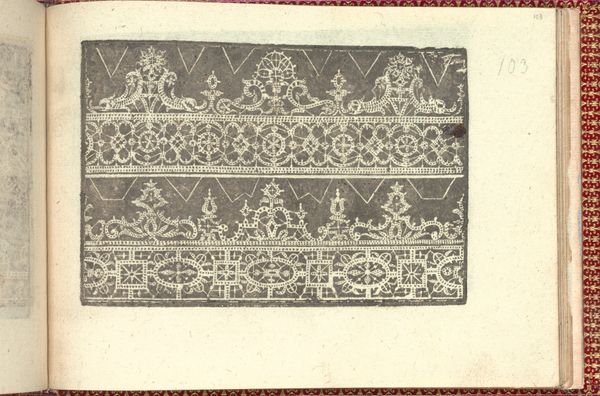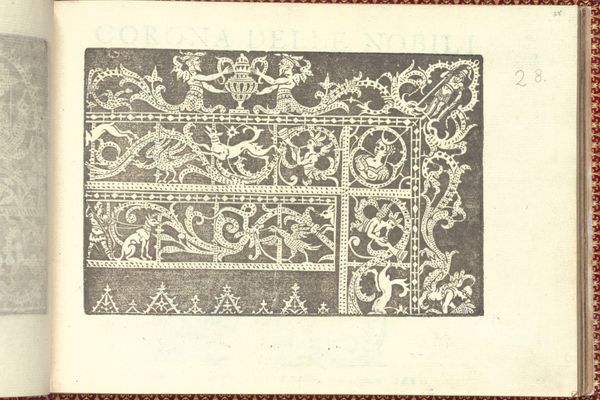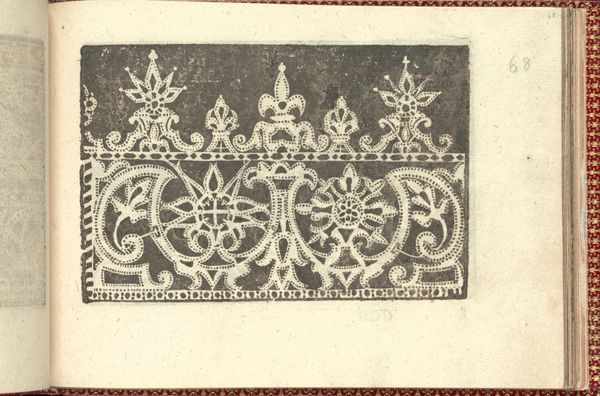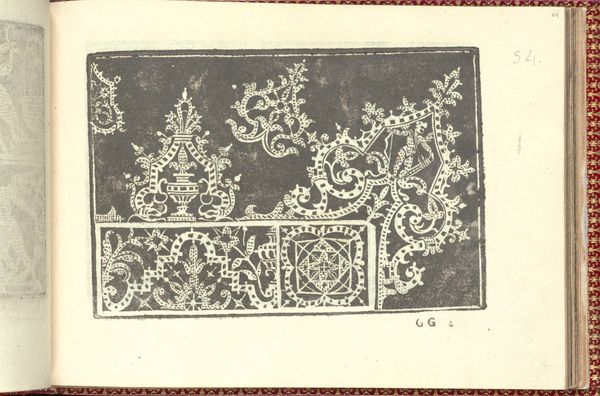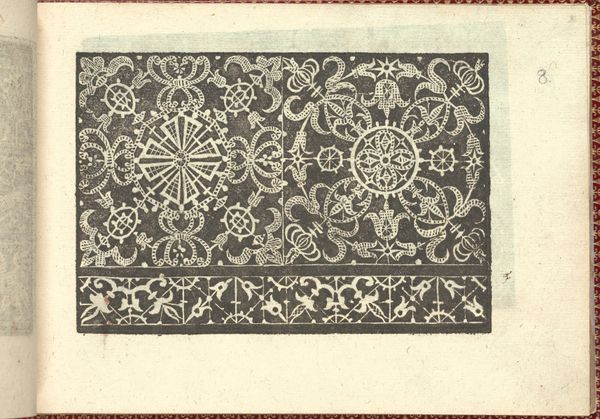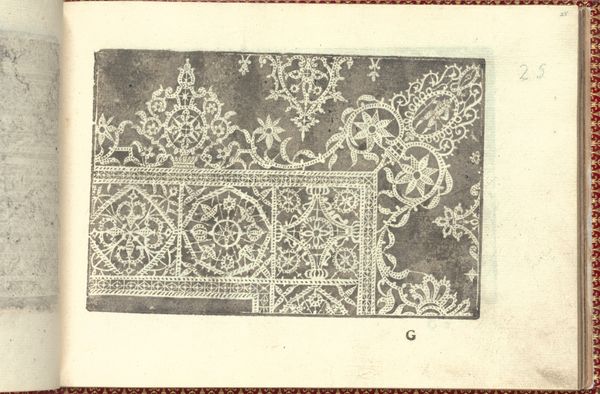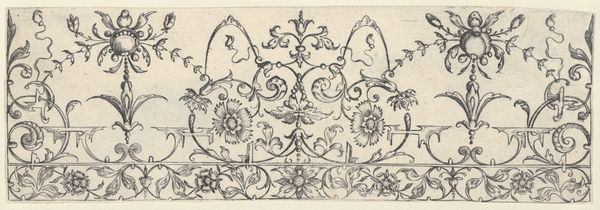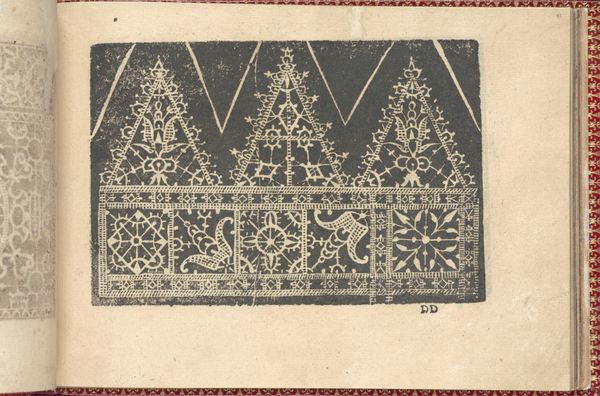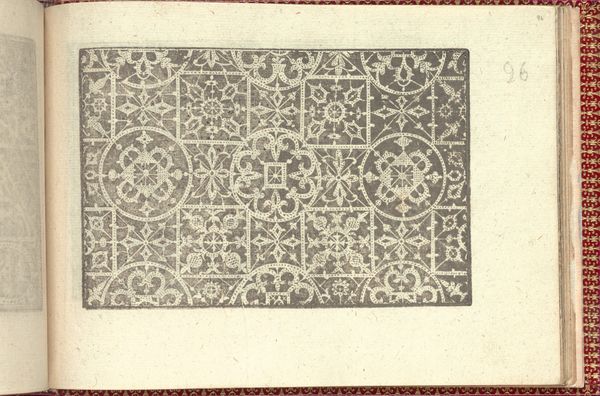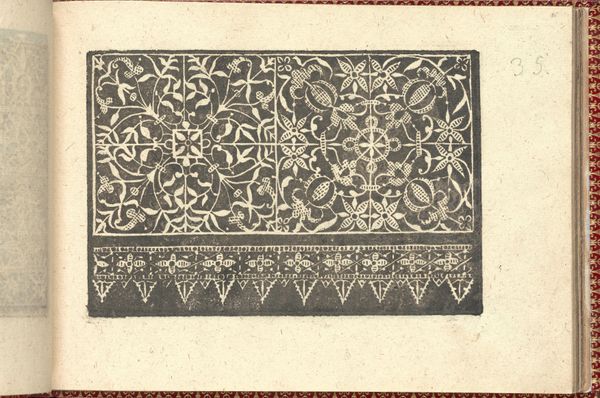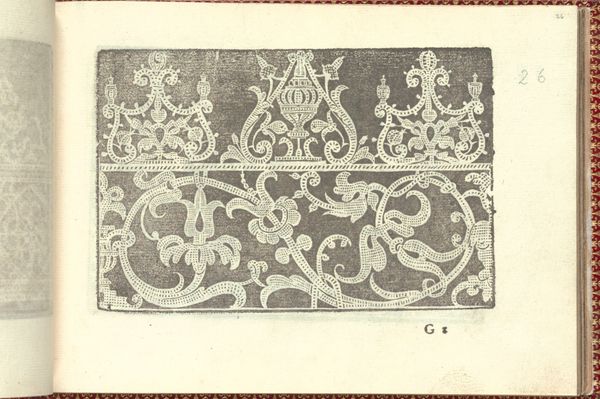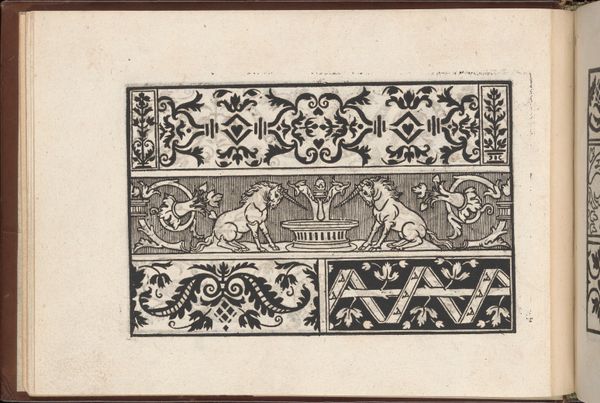
Corona delle Nobili et Virtuose Donne: Libro I-IV, page 65 (recto) 1601
0:00
0:00
drawing, graphic-art, print, paper, engraving
#
drawing
#
graphic-art
# print
#
book
#
paper
#
11_renaissance
#
personal sketchbook
#
coloured pencil
#
geometric
#
line
#
decorative-art
#
engraving
Dimensions: Overall: 5 1/2 x 7 11/16 in. (14 x 19.5 cm)
Copyright: Public Domain
This is a page from Cesare Vecellio’s “Corona delle Nobili et Virtuose Donne,” a pattern book made in Venice, sometime in the late 16th century. Here, the geometric patterns, specifically the rosettes, demand our attention. These aren’t merely decorative; they are potent symbols, echoing the ancient fascination with the sun and celestial order. The rosette motif has its roots in ancient cultures, from Mesopotamian art to the রোজ of Indian mandalas, often representing cosmic harmony and divine radiance. Consider how the rosette appears in a Gothic cathedral's rose window, transforming sunlight into a divine spectacle. Over time, this symbol has traversed continents and epochs, each culture imbuing it with new layers of meaning while preserving its core essence of cyclical renewal. This enduring symbol resonates deep within our collective memory, stirring subconscious associations with light, life, and the eternal dance of existence. It is a testament to how certain archetypal images continue to exert their magnetic pull, bridging the past with the present, and engaging viewers in an unspoken dialogue across time.
Comments
No comments
Be the first to comment and join the conversation on the ultimate creative platform.
